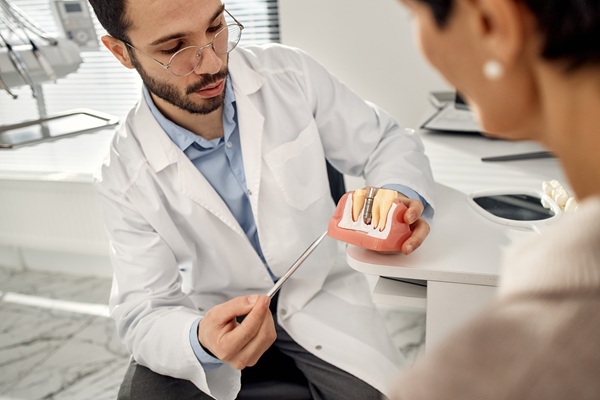 While examining the inside of the mouth is already a typical part of a regular dental check-up, for many people it is also worth scheduling an appointment for an oral cancer screening. The American Cancer Society predicts that more than 53,000 people will be diagnosed with oropharyngeal or oral cavity cancer in 2020, and together these two types of cancers are expected to cause more than 10,000 deaths.
While examining the inside of the mouth is already a typical part of a regular dental check-up, for many people it is also worth scheduling an appointment for an oral cancer screening. The American Cancer Society predicts that more than 53,000 people will be diagnosed with oropharyngeal or oral cavity cancer in 2020, and together these two types of cancers are expected to cause more than 10,000 deaths.
Risk factors
If you are wondering if it is necessary for you to get a cancer screening, it can be helpful to know some of the risk factors. The most common one is smoking, with an even greater likelihood of cancer if that is combined with a habit of heavy alcohol use. It is thought that these two factors may be what account for oral cancer being twice as common in men. Sun exposure is another indicator of concern for lip cancer specifically. Presence of the human papillomavirus (HPV) also has a rising correlation with cancer of the mouth.
Screening process
An oral cancer screening appointment involves a closer examination than is typical for a routine dental cleaning. Here is what can be expected:
A more detailed intake
The dental or medical professional should ask a number of questions, and it is important to be extremely honest when answering. It is common to dismiss certain symptoms as being no big deal or just one's imagination. Even if it seems like it is nothing, be sure to mention whatever comes to mind during the intake. These are some of the more common symptoms that may be asked about:
- Ongoing hoarseness
- Difficulty swallowing
- Earaches, especially one-sided ones
- Feeling small nodules on the side of the neck
- Changes in the voice
Visual inspection
This type of screening entails far more than just looking inside the mouth. The screener also looks at the lips, face and neck to check for any indications of issues that need further investigation.
Physical examination
The screener next conducts a physical examination, using gloved hands to palpate, or touch, the different areas of the mouth, face and neck. This includes checking inside the mouth, underneath the tongue and inside the cheeks and lips, as well as palpating the body and sides of the tongue. The neck and face are also physically examined. At the same time, the professional continues the visual observation of all these areas.
Next steps
Depending on the results of the oral cancer screening, patients may be advised about suggested next steps. These may entail further examinations or diagnostic tests if any abnormalities were noticed.
Check out what others are saying about our dental services on Yelp: Oral Cancer Screenings in Kennewick, WA.
Conclusion
As with any type of cancer, the earlier that oral cancer is caught, the better the chance of a positive outcome. Oftentimes, there is no pain present in the early stages of this condition. Rather, the changes are often subtle, so it can take a trained professional who has screened hundreds of patients to be able to catch small warning signs.
Request an appointment or call Gledhill Dental at 509-800-8410 for an appointment in our Kennewick office.
Related Posts
Dental crowns are a popular option for restoring a smile, but they offer more benefits than you may know. A dental crown is a customized, tooth-shaped cap placed over a damaged or compromised tooth to help its shape, size, appearance, and strength. Discover common signs indicating a dental crown is right for you.A dental crown…
Dental implants provide a durable and natural-looking solution for missing teeth, but they do not work on their own. An implant crown serves as the final step in this process, completing the restoration and restoring smile function, appearance, and confidence. They mimic the appearance and strength of natural teeth to integrate with the rest of…
Anyone with damaged, decayed, discolored, or misaligned teeth might be an ideal candidate for dental crowns. Also called caps, these restorations have various uses in dentistry and are often combined with other restorations like implants and bridges.A dental crown is a tooth-shaped shell that covers up the visible part of a tooth, protecting it against…


